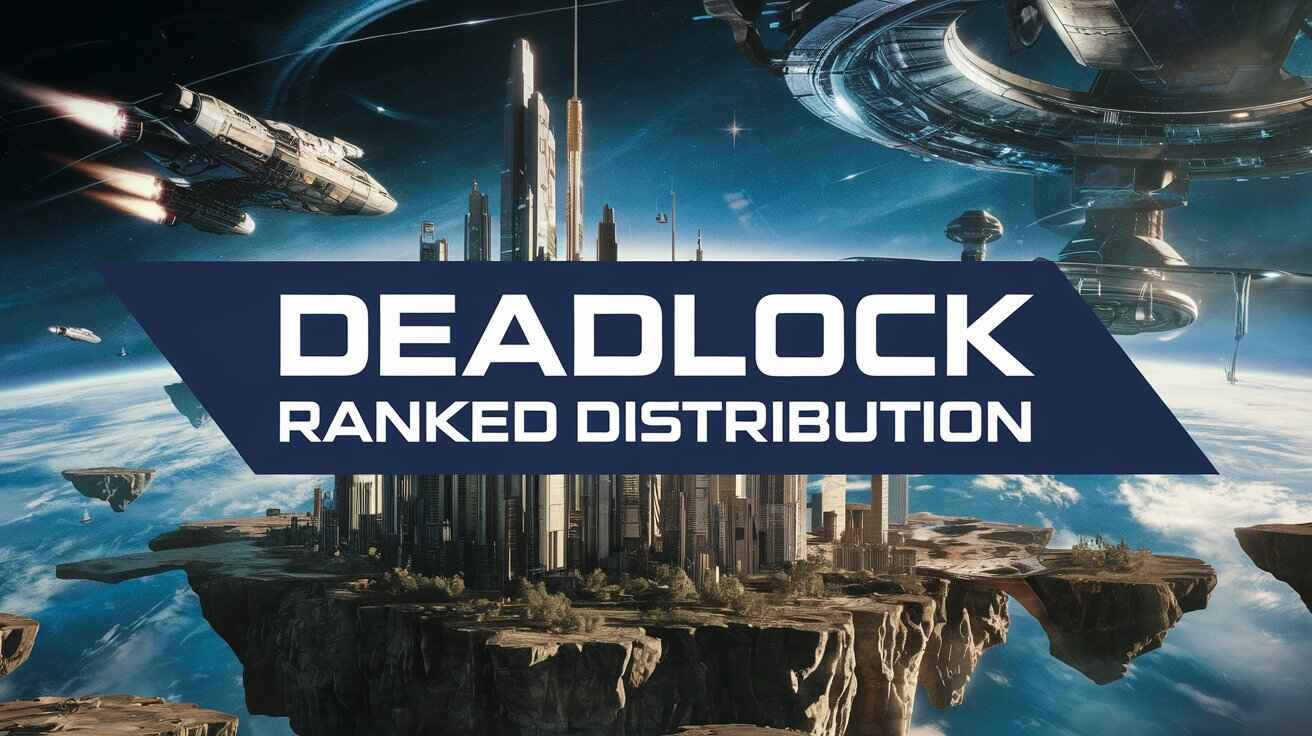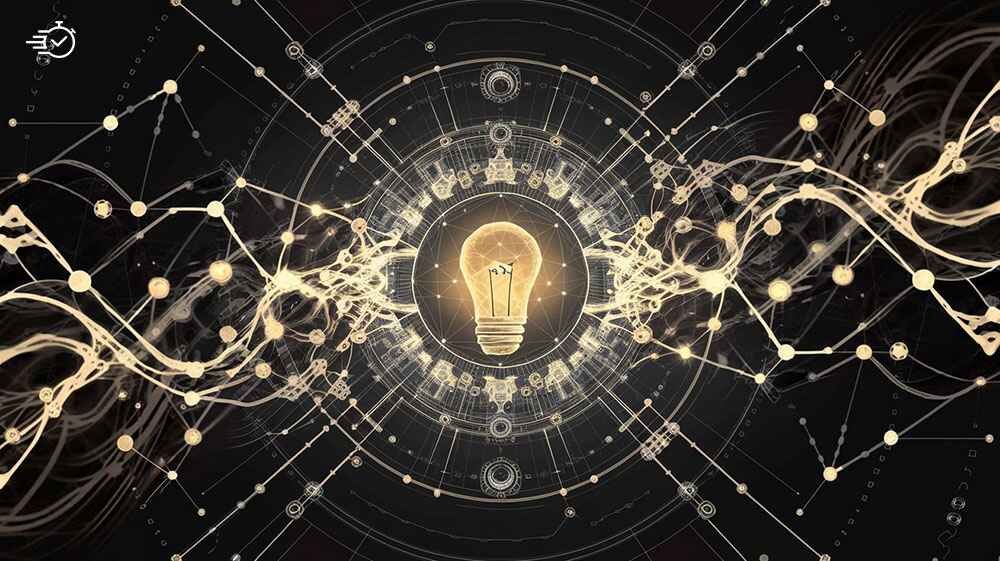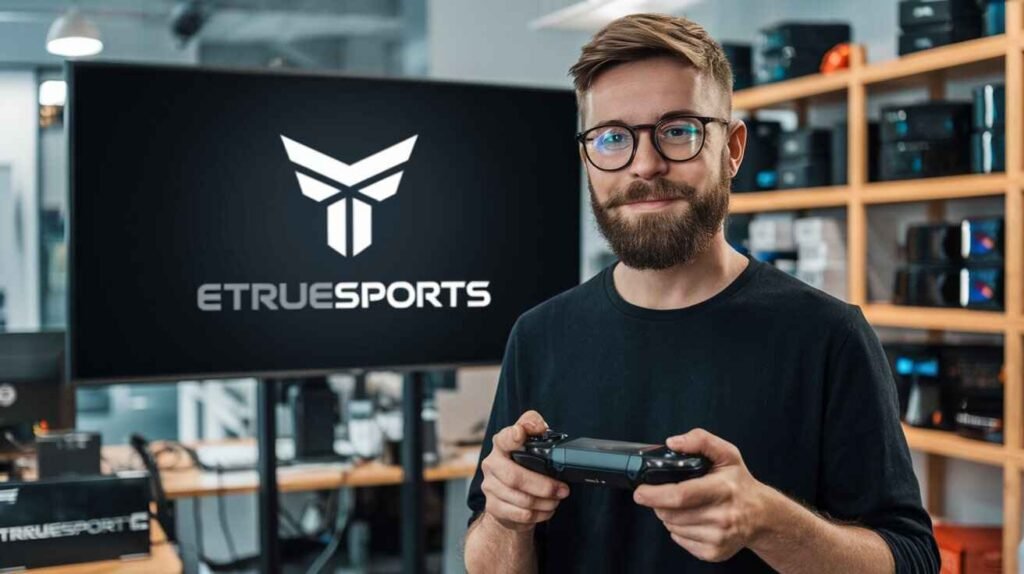Deadlock has quickly become a popular game in the competitive gaming world, offering an exciting ranked mode that pushes players to improve their skills and strategies. Whether you’re a beginner trying to get the hang of the game or an experienced player aiming for the highest ranks, understanding the ranked system in Deadlock is key to success. This guide will take you through everything you need to know about the ranked mode, including how ranks are structured, how they are distributed, recent updates, and the best strategies for climbing the ranks. By the end of this article, you’ll have all the information you need to succeed in Deadlock’s competitive scene. Understanding rank structures in competitive games can help players appreciate the dynamics of progression in Deadlock’s competitive environment.
Introduction to Deadlock Ranked Mode
Deadlock’s ranked mode is designed to provide a structured and competitive environment where players can measure their skills against others. Unlike casual play, every match in ranked mode has significant implications for your standing, encouraging players to perform consistently and strategically. With a meticulously crafted rank system and regular updates, Deadlock ensures that the competitive scene remains fresh and challenging.
What Makes Deadlock’s Ranked Mode Stand Out?
- Integrated Ranking System: Every match you play contributes to your rank, ensuring that all gameplay is meaningful.
- Diverse Rank Structure: With 11 main ranks and 6 sublevels each, Deadlock offers a nuanced progression system that rewards dedication and skill.
- Weekly Progression Requirements: Maintaining your rank requires consistent play, promoting active engagement and continuous improvement.
Understanding how to stay competitive is vital for improving your standing in ranked games, which also applies to many competitive titles.
Understanding Deadlock’s Ranked System
To excel in Deadlock’s ranked mode, it’s essential to grasp the mechanics behind the ranking system. This section breaks down the core components, including rank structures, progression criteria, and the MMR (Matchmaking Rating) system.
Rank Structure and Progression
Deadlock features an extensive rank hierarchy designed to categorize players based on their skill levels. The ranks, from lowest to highest, are:
- Initiate
- Seeker
- Alchemist
- Arcanist
- Ritualist
- Emissary
- Archon
- Oracle
- Phantom
- Ascendant
- Eternus

Each of these main ranks is further divided into 6 sublevels, allowing for precise differentiation between players. This granular approach ensures that progression feels meaningful, with each level presenting new challenges and milestones. If you’re curious about optimizing your strategy for progress, Deadlock’s system can offer insights for mastering both rank and skill.
Weekly Activity Requirements
To maintain your rank, Deadlock mandates active participation. Players must complete 7 ranked matches each week, with the deadline set for Tuesday at 8 PM GMT. This requirement serves multiple purposes:
- Encourages Consistent Play: Regular participation keeps players engaged and continually improving.
- Prevents Rank Stagnation: Ensures that ranks accurately reflect current skill levels by requiring recent activity.
- Promotes Fair Competition: Active ranks maintain a dynamic and competitive environment, preventing inactive players from skewing the rankings.
This is similar to systems seen in many online multiplayer games where consistency is rewarded and engagement is crucial for ranking.
Badge and MMR System
Deadlock’s ranked system is intricately tied to the MMR (Matchmaking Rating) and badge updates. Here’s how they work:
- Core MMR: Represents your overall skill level and is the primary factor in determining your rank.
- Hero-Specific MMR: Tracks your proficiency with individual heroes, ensuring that your performance with specific characters influences matchmaking.
- Real-Time Badge Updates: Unlike some games where badge updates are delayed, Deadlock updates your rank badge immediately after changes in your MMR, providing instant feedback on your performance.
This dual MMR system ensures that both overall skill and hero-specific expertise are recognized, fostering a more balanced and fair competitive environment. Check out strategies to improve your gameplay performance for even better results.
Rank Distribution and Player Demographics
Understanding how players are distributed across ranks can provide valuable insights into the competitive landscape of Deadlock. Unlike many competitive games that follow a bell curve distribution, Deadlock’s rank distribution presents a unique challenge for players aiming to climb the ranks.
Detailed Rank Populations
As of the latest data, here’s a breakdown of player distribution across each rank in Deadlock:
- Initiate: 8,897 players
- Seeker: 3,974 players
- Alchemist: 5,853 players
- Arcanist: 5,913 players
- Ritualist: 11,250 players
- Emissary: 11,704 players
- Archon: 17,386 players
- Oracle: 10,884 players
- Phantom: 11,987 players
- Ascendant: 3,717 players
- Eternus: 414 players
In comparison to other competitive games, Deadlock shows a different player distribution with more players clustering around mid-to-upper ranks.
Comparison with Other Competitive Games
Unlike Overwatch 2, which typically features a bottom-heavy rank distribution with the majority of players in lower ranks, Deadlock presents a mid-to-upper heavy distribution. This means a larger proportion of players are concentrated in the mid and higher ranks, creating a more competitive environment. The Archon rank, with the highest number of players, stands as the central hub of competition, while the Eternus rank remains highly exclusive and challenging to attain.
Impact of Recent Updates and Patches
Deadlock’s development team is committed to refining the ranked experience, ensuring it remains fair, balanced, and engaging. Recent updates, particularly the November 21st patch, have introduced significant changes aimed at enhancing the competitive landscape.
Post-November 21st Patch Enhancements
The November 21st patch brought several key updates to Deadlock’s ranked mode, addressing player feedback and optimizing matchmaking processes. Here’s a detailed look at these enhancements:
Unified Matchmaking System
One of the most significant changes is the unification of matchmaking queues. Previously, Deadlock had separate queues for ranked and normal matches, but the patch has merged these into a single queue where all matches are now ranked. This change ensures that every game played contributes to your rank progression, eliminating the distinction between casual and competitive play.
No Time Restrictions
Prior to the patch, ranked matches were limited to specific time windows, restricting players from engaging in ranked gameplay outside these periods. The update removes these limitations, allowing players to queue for ranked matches anytime, providing greater flexibility and accessibility.
Immediate Badge Updates
Another notable improvement is the real-time badge update system. Previously, rank badge changes were subject to delays or required a certain number of games to reflect accurately. Now, badges update immediately after changes in MMR, giving players instant feedback on their performance and rank progression.
Global Maintenance and Fair Play
The patch also introduced occasional global maintenance updates aimed at balancing the player population and addressing issues like cheating. These maintenance sessions help maintain a fair and competitive environment by ensuring that matchmaking remains balanced and that players are matched with others of similar skill levels.
Matchmaking Rework
The matchmaking system has undergone a comprehensive rework to enhance match quality and fairness. Key aspects include:
- Single Primary Matchmaking Mode: With the removal of separate ranked and normal queues, the matchmaking algorithm now focuses solely on ranked gameplay, ensuring that all matches contribute to rank progression.
- No Limited Hours: Players can engage in ranked matches without being constrained by specific time windows, making it easier to participate at their convenience.

Hero MMR System
Deadlock’s introduction of a Hero MMR system adds another layer of depth to the ranked experience. This system evaluates players based on their performance with specific heroes, ensuring that matchmaking is more nuanced and tailored. Key features include:
- Individual Hero Performance Tracking: Your proficiency with each hero is tracked over your last 20 games, allowing for more accurate matchmaking based on your strengths and weaknesses.
- Regional Leaderboards: Both core MMR and hero-specific MMR are tracked on regional leaderboards, highlighting the top 1000 players globally and regionally. To qualify for these leaderboards, players must have played at least 50 games in the last 30 days for core MMR and 20 games with a specific hero for hero MMR.
The Writer’s Journey: From Ritualist 3 to Climbing Higher
Understanding Deadlock’s ranked system isn’t just about knowing the mechanics—it’s also about experiencing the journey firsthand. Let’s delve into the writer’s personal experience with Deadlock’s ranked mode, highlighting the challenges and revelations encountered along the way.
Initial Rank Placement
Starting as a newcomer to the MOBA (Multiplayer Online Battle Arena) genre, the writer was placed in Ritualist 3, a mid-level rank just below Emissary. This initial placement felt encouraging, suggesting a decent skill level for someone new to the game. The writer believed that Ritualist 3 represented an average skill level, providing a solid foundation to build upon.
Surprising Rank Distribution
However, as the writer continued to play and analyze the rank distribution, a surprising revelation emerged. With 55,638 players ranked above Ritualist 3 and only 18,724 players below, it became clear that Ritualist 3 is not as average as initially thought. This skewed distribution indicates a mid-to-upper-heavy rank system, where achieving and maintaining a mid-level rank requires more skill than previously perceived.
This realization was both disheartening and motivating. It underscored the competitive nature of Deadlock’s ranked mode and highlighted the importance of continuous improvement and strategic play to climb the ranks.
Strategies for Excelling in Deadlock Ranked Mode
Climbing the ranks in Deadlock’s competitive mode requires a blend of skill, strategy, and consistency. Here are some effective strategies to help you advance from Initiate to Eternus:
Master Multiple Heroes
Diversifying your hero pool is crucial for several reasons:
- Adaptability: Different heroes excel in various scenarios. Being versatile allows you to adapt to your team’s needs and counter the enemy’s strategy.
- Hero-Specific MMR: Since Deadlock tracks your performance with individual heroes, excelling with multiple heroes can boost your overall MMR and enhance matchmaking accuracy.
- Meta Flexibility: The game’s meta can shift with updates and patches. Having a broad hero repertoire ensures you can pivot to heroes that are currently strong or suited to your playstyle.
Consistent Gameplay
Consistency is key to maintaining and improving your rank:
- Regular Participation: Engage in at least 7 matches weekly to meet the activity requirement and keep your rank eligibility intact.
- Skill Maintenance: Regular play helps maintain your reflexes, strategic thinking, and overall game sense, which are essential for climbing ranks.
- MMR Stability: Consistent performance leads to a stable MMR, reducing the likelihood of sudden rank drops or stagnation.
Analyze and Adapt
Continuous improvement requires self-assessment and adaptation:
- Post-Game Analysis: Review your match statistics to identify strengths and weaknesses. Focus on areas where you can improve, such as positioning, hero usage, or decision-making.
- Learn from Mistakes: Instead of getting frustrated by losses, use them as learning opportunities. Understand what went wrong and how you can avoid similar mistakes in future matches.
- Stay Updated with Patches: Keep abreast of game updates and patch notes. Understanding changes to heroes, items, and mechanics can give you a strategic edge.
Effective Teamwork and Communication
Deadlock is a team-based game, and effective collaboration can significantly impact match outcomes:
- Clear Communication: Use in-game chat and voice communication to coordinate strategies, call out enemy positions, and plan maneuvers.
- Role Fulfillment: Understand your role within the team and execute it effectively. Whether you’re a tank, support, or damage dealer, fulfilling your role contributes to the team’s overall success.
- Positive Attitude: Maintain a positive and constructive attitude, even during tough matches. Encouraging teammates and staying calm under pressure can boost team morale and performance.

Climb Smartly
Strategic rank climbing involves more than just winning games:
- Target High-Population Ranks: Focusing on ranks like Archon, which have a higher number of players, allows you to practice against a balanced and competitive pool before aiming for elite ranks like Eternus.
- Avoid Tilt: Playing while frustrated or angry can lead to poor performance and unnecessary losses. Take breaks when needed to maintain a clear and focused mindset.
- Optimize MMR Gains: Understand how MMR changes work and aim to maximize gains by consistently performing well in matches, especially against opponents with similar or higher ranks.
Challenges and Future Developments
While Deadlock’s ranked mode offers a robust and competitive environment, it also presents several challenges. Additionally, the developers are continually working on improvements to enhance the overall experience.
Current Challenges in Ranked Mode
- High Rank Concentration: With a significant number of players concentrated in mid-to-upper ranks, climbing to the highest tiers like Eternus is exceptionally challenging. The competition is fierce, and only the most dedicated and skilled players can break through to these elite levels.
- Match Quality During Off-Peak Hours: While the removal of time restrictions has increased accessibility, it has also led to concerns about match quality during low-activity periods. Players may encounter matches with a wider skill range, affecting the overall competitive balance.
- Player Retention in Lower Ranks: Ensuring that players in lower ranks remain engaged is crucial for maintaining a healthy rank ecosystem. Without sufficient motivation and rewards, lower-ranked players might lose interest, leading to an imbalance in the competitive scene.
Potential Future Enhancements
Deadlock’s development team is actively addressing these challenges with several potential future enhancements:
- Ranked Leaderboard Expansion: Introducing a global ranked leaderboard will add another layer of competition, allowing top players to gain recognition and fostering a more competitive spirit among the community.
- Improved Matchmaking Algorithms: Enhancing matchmaking algorithms to better account for player skill, hero proficiency, and team dynamics will improve match quality, especially during off-peak hours.
- Refined Rank Distribution: With more data and player feedback, developers aim to refine the rank distribution to achieve a more balanced and predictable competitive environment. This includes adjusting rank thresholds and refining MMR calculations to ensure fair placements.
- Enhanced Anti-Cheat Measures: Continuously improving anti-cheat systems will help maintain fair play, ensuring that all players compete on a level playing field and that rankings accurately reflect genuine skill.
- Additional Incentives and Rewards: Introducing more incentives for lower-ranked players, such as exclusive rewards, events, and progression milestones, can help retain player interest and encourage continued engagement.
Conclusion: Navigating the Path to Eternus
Deadlock’s ranked mode is a testament to the game’s commitment to providing a fair, balanced, and challenging competitive environment. From its intricate rank structure and comprehensive MMR system to its ongoing updates and refinements, Deadlock offers a rich and engaging experience for all players striving to climb the ranks.
Understanding the nuances of the ranked system, analyzing rank distributions, and implementing effective strategies are essential steps toward achieving higher ranks. While the journey from Initiate to Eternus is fraught with challenges, the rewards of mastering Deadlock’s ranked mode are well worth the effort.
As Deadlock continues to evolve, players can look forward to a more refined and balanced competitive scene, with enhanced matchmaking, expanded leaderboards, and improved rank distribution. Whether you’re aiming to dominate the mid-tier ranks or aspire to reach the exclusive heights of Eternus, this guide equips you with the knowledge and strategies needed to succeed.
Embrace the challenge, refine your skills, and embark on your journey to become one of Deadlock’s elite competitors. The path to Eternus awaits those who are dedicated, strategic, and relentless in their pursuit of excellence.
FAQs related to Deadlock’s ranked mode
How does the ranked system in Deadlock work?
The ranked system in Deadlock categorizes players into 11 main ranks, each with 6 sublevels. Players progress through these ranks based on their performance in ranked matches, with a focus on Matchmaking Rating (MMR) and hero-specific proficiency. Consistent participation, meeting weekly activity requirements, and excelling with different heroes are essential for climbing the ranks.
What are the weekly activity requirements for maintaining a rank in Deadlock?
To maintain your rank in Deadlock, players must complete at least 7 ranked matches each week. This requirement helps ensure that players stay engaged, prevents rank stagnation, and promotes fair competition by keeping ranks reflective of current skill levels.
What is the Hero-Specific MMR system in Deadlock?
The Hero-Specific MMR system tracks your performance with individual heroes, allowing matchmaking to be tailored to your strengths with specific characters. This system adds depth to the ranking experience, as your skill with each hero influences your overall rank and matchmaking quality.
How is the rank distribution in Deadlock different from other competitive games? Deadlock has a mid-to-upper-heavy rank distribution, meaning a larger proportion of players are concentrated in the mid to higher ranks. This creates a competitive environment with more players in the Archon and Phantom ranks. Unlike games like Overwatch 2, where most players are in lower ranks, Deadlock’s competitive landscape is more evenly spread across the upper ranks, making it more challenging to climb to the highest tiers.
What are the key strategies for climbing the ranks in Deadlock?
To climb the ranks To climb the ranks, focus on mastering a variety of heroes, playing consistently, and analyzing your matches for areas to improve. Effective teamwork and communication are also crucial for winning games and advancing.
Also Checkout: Fallout: New Vegas Console Commands – Hidden Powers & Game-Changing Cheats!





